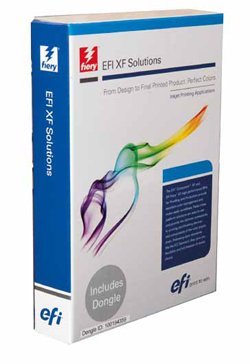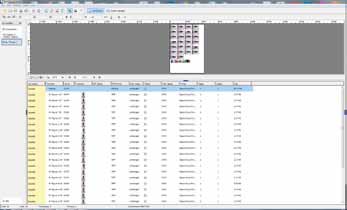articles/Review/efi-page1
The EFI Fiery RIP - part 1 of 1 2 3 4 5
by Mike McNamee Published 01/04/2013

Raster Image Processors (RIPs)
They are specialist software which take over the printing operation on a computer, removing the more familiar Photoshop/Canon/Epson drivers from the workflow and substituting their own. This is quite a task and when added to the additional features that a RIP provides goes some way to explaining why they can be quite expensive.
RIPs are primarily intended to provide accurate representations of the way in which a chosen printing press will print an image. This is more complex than it might at first seem but imagine trying to print onto the pink paper of the Financial Times and you start to get an idea of the issues that might be thrown up. Generally this process is called 'proofing' but even proofing comes in a number of guises. These range from For Position Only (FPO) proofs which only confirm that the images are in the correct place on the page and the right way up! FPOs also provide a hard-copy of the way text falls on the page for the copy proof-readers.
At the other end of the scale people need assurance that a proof is an accurate colour representation of the expected output and this is accomplished via certified contract proofs. Contract proofs are created under tightly controlled circumstances and are usually verified by measurement after they have been created, ahead of signing off to form the basis of a legal contract (hence the name). The conditions under which contract proofs are created and measured are agreed by national standards organisations, along with specialist national graphics bodies such as Fogra (in Europe) and GRACol (in the USA).

For the commercial photographer the ability to create an accurate and certified representation of their handiwork can be extremely helpful, especially if a dispute is likely to arise from a flawed output, should it occur. There are many pitfalls between the camera body and the final printed magazine/advertisement and unfortunately somebody usually has to shoulder the blame. Traditionally the photographer was blamed by the printer and vice versa, leading in some instances to the printer requiring original transparencies - a demand that could no longer be fulfilled from a digital capture; this led to some resistance from the printers who had huge capital investments in drum scanners lying idle.
The workflow is much more refined today and while problems are less frequent, they still occur, especially if the printing is being carried out in a far-off land (eg the Far East). Accurate proofs are therefore an insurance policy worth paying for!
RIPs provide other facilities to make life simpler for operators, in particular the less skilled ones - not everybody is a Photoshop expert and a colour management geek to boot! This opens the possibility of using a RIP simply to 'do the printing' from a one-click operation.
You are currently on page 1
- The EFI Fiery RIP page 1
- The EFI Fiery RIP page 2
- The EFI Fiery RIP page 3
- The EFI Fiery RIP page 4
- The EFI Fiery RIP page 5
1st Published 01/04/2013
last update 09/12/2022 14:53:43
More Review Articles
There are 0 days to get ready for The Society of Photographers Convention and Trade Show at The Novotel London West, Hammersmith ...
which starts on Wednesday 15th January 2025





